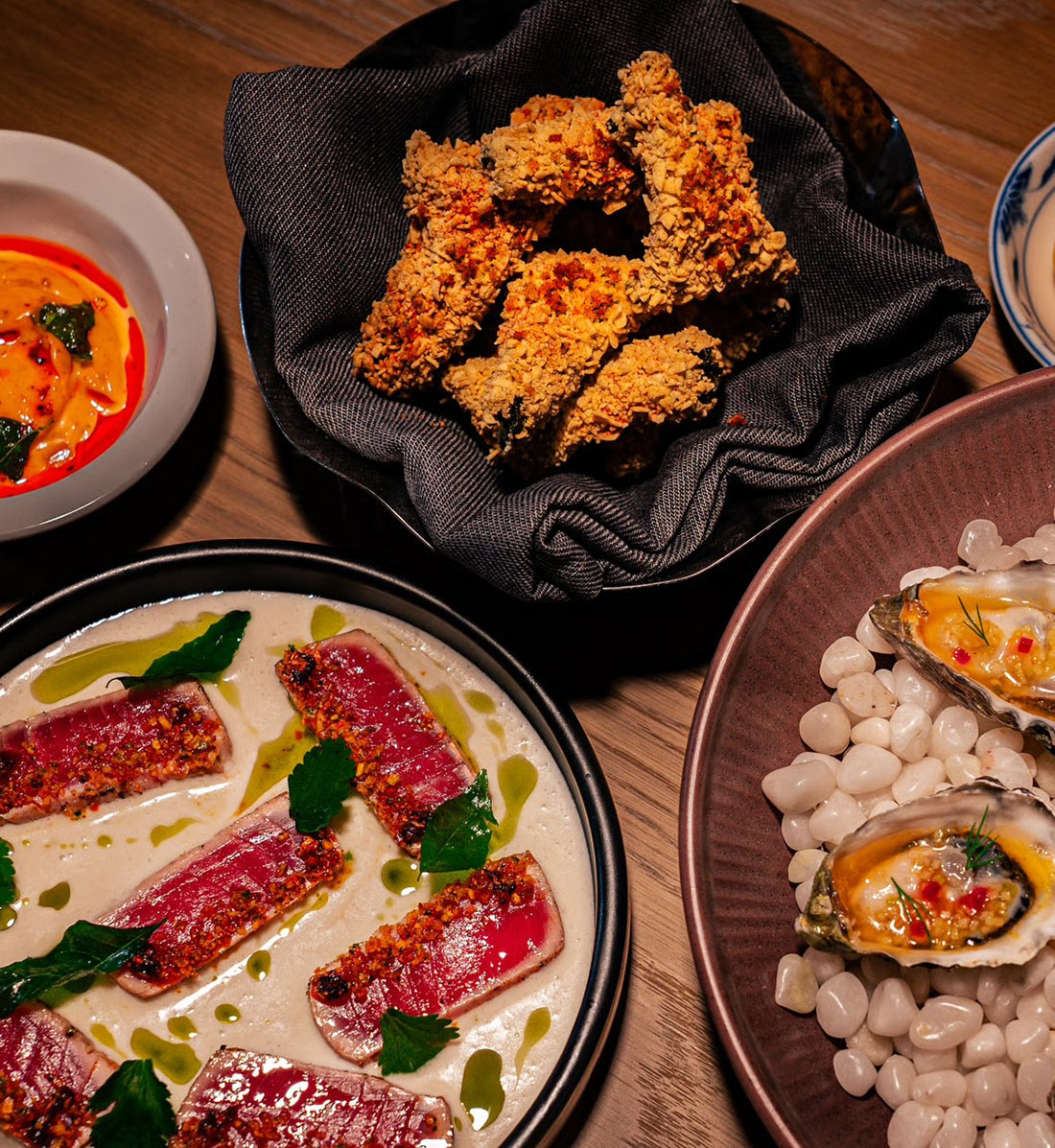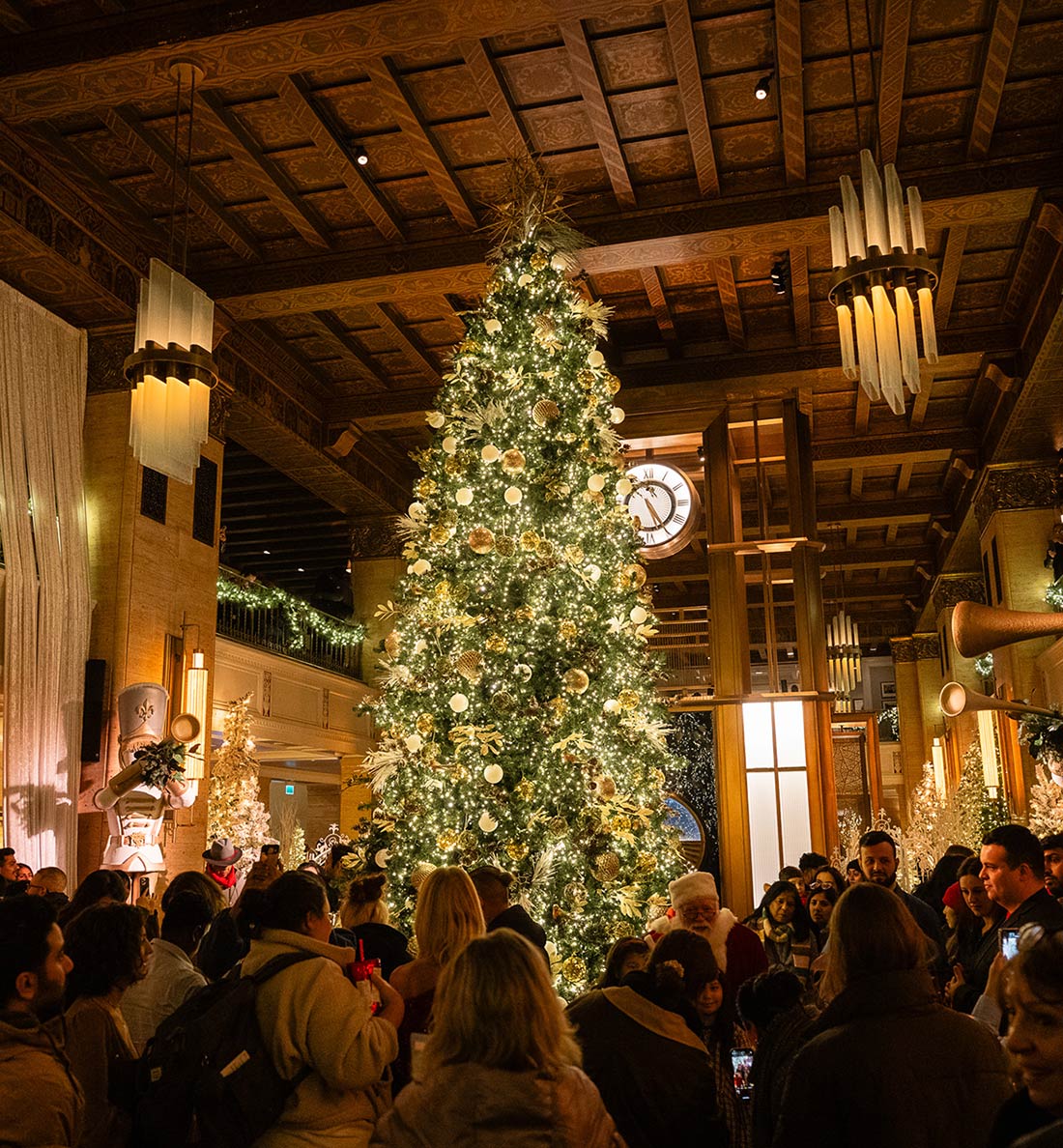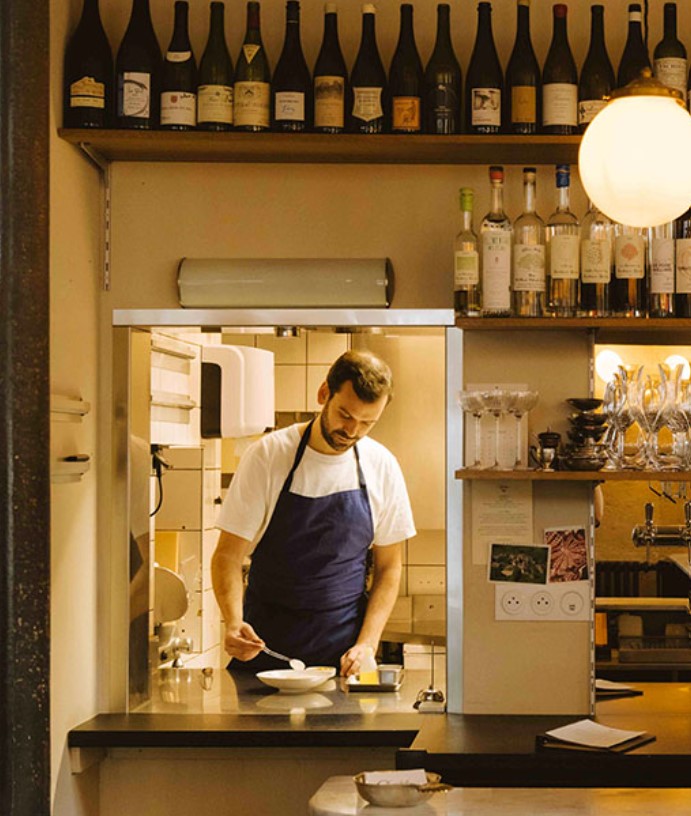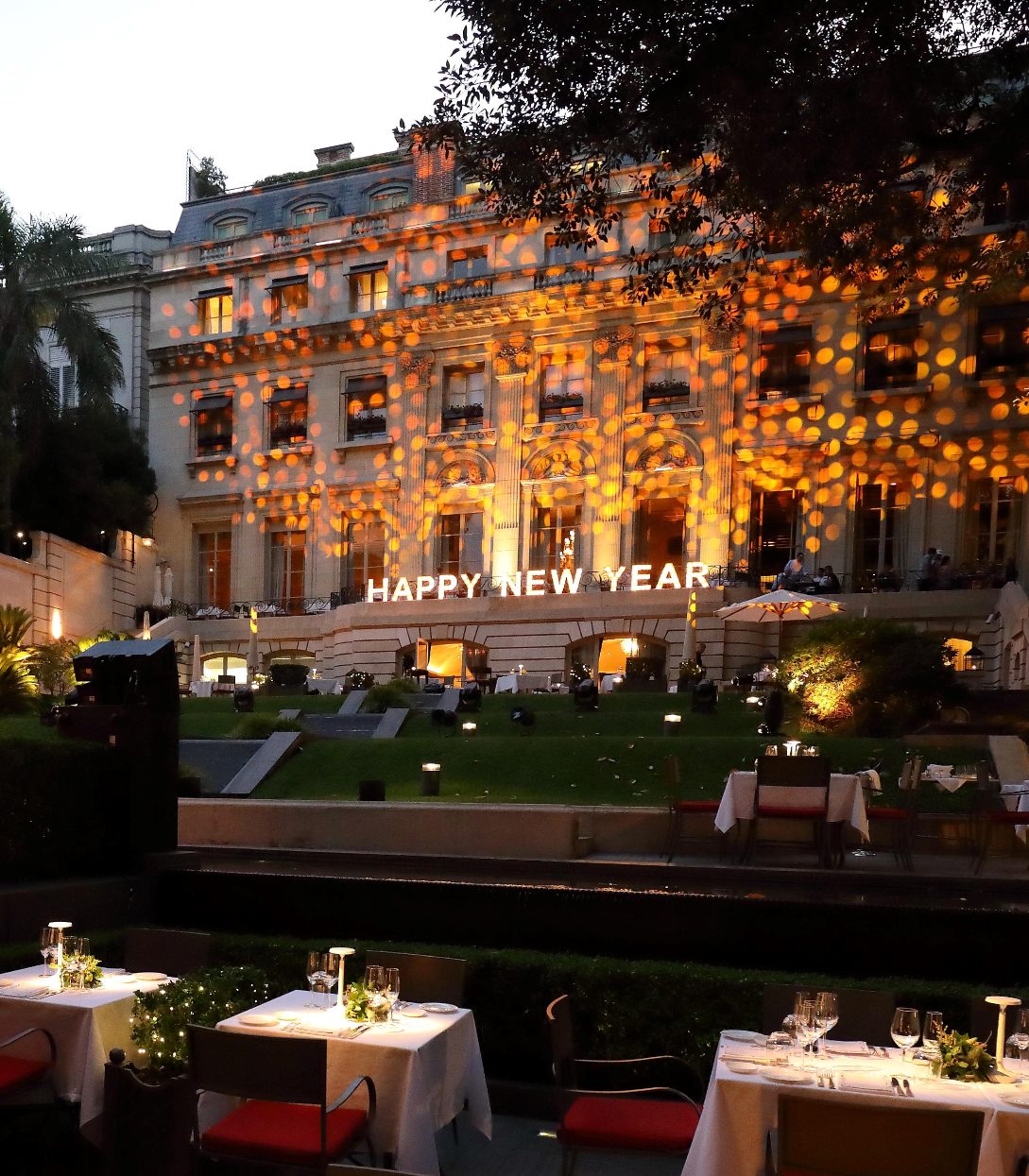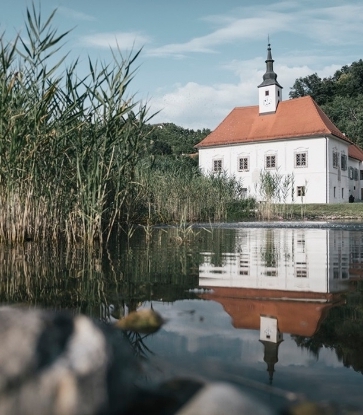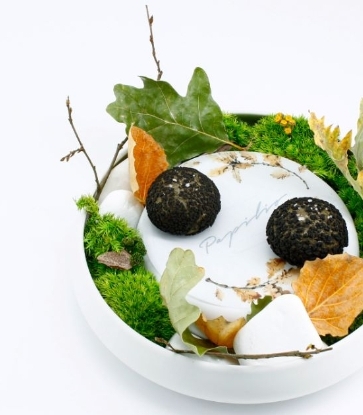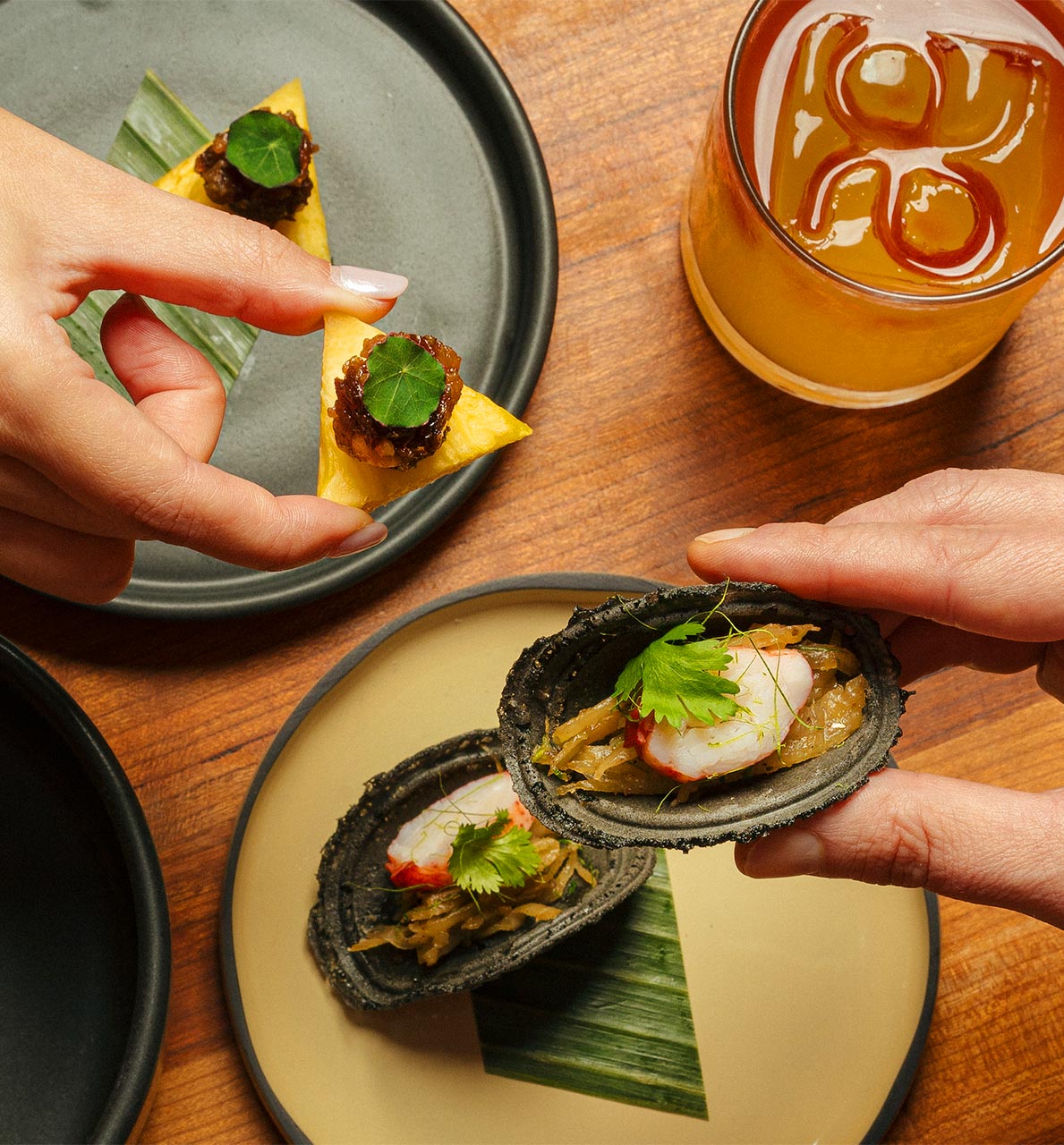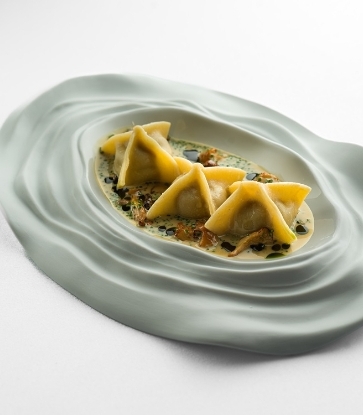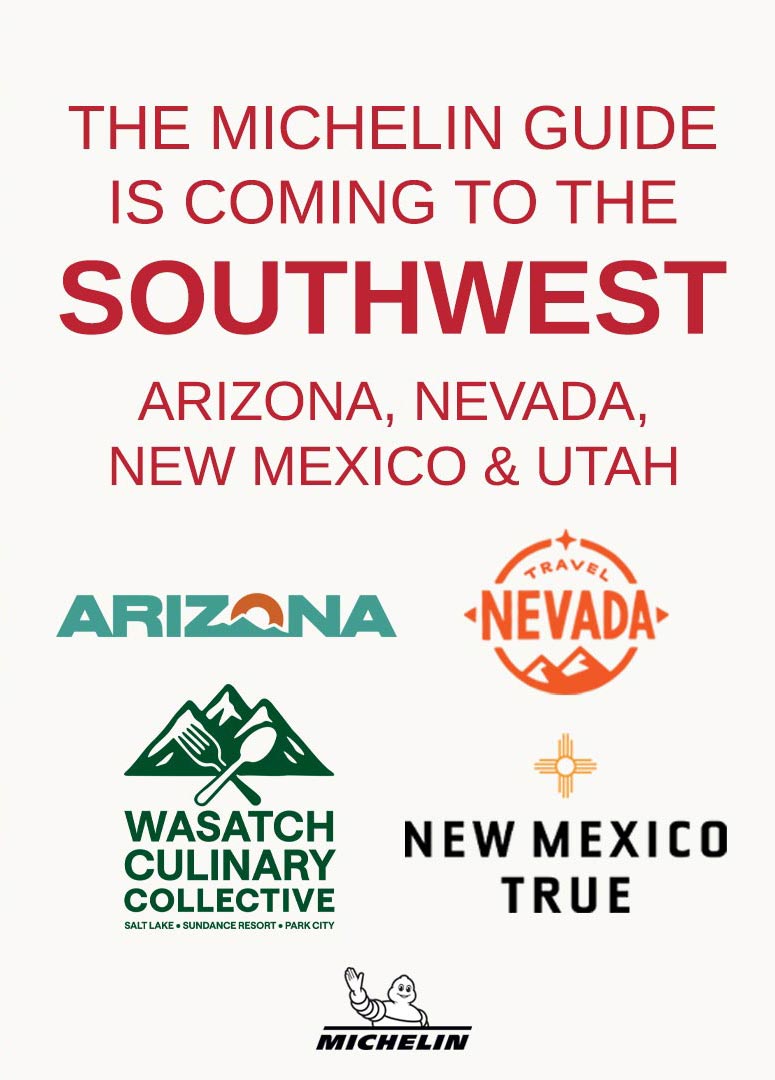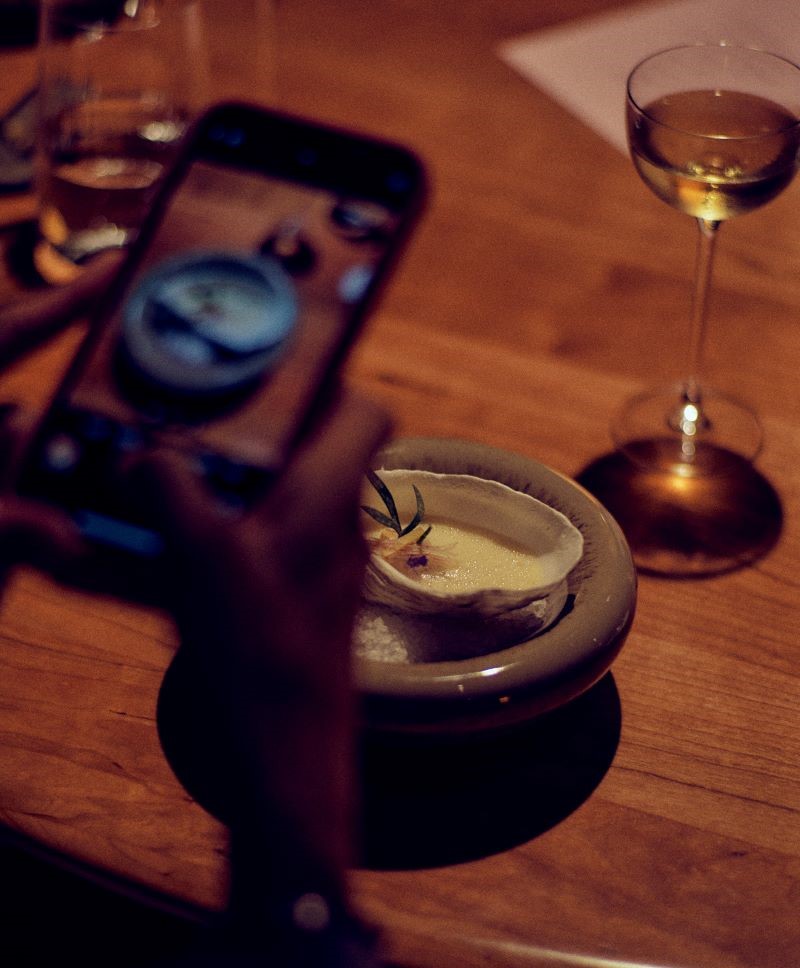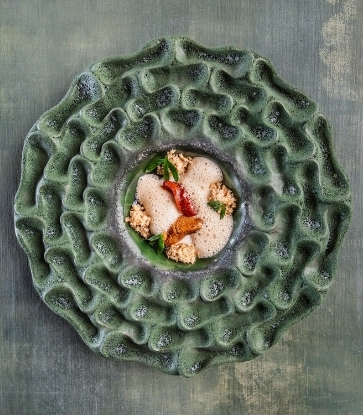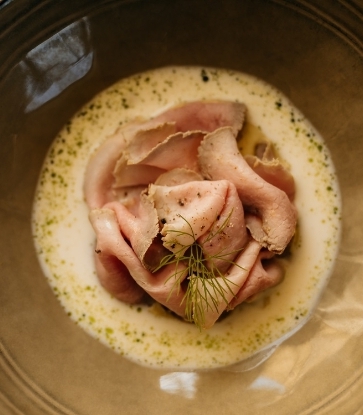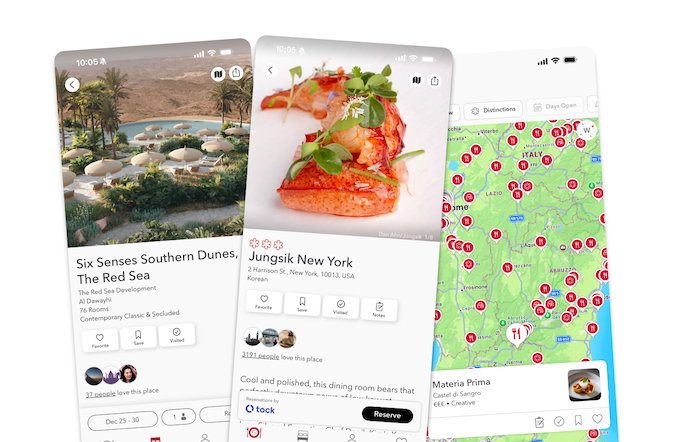As young children, Lithuanians often visit the forest with their parents or grandparents. Among the thick trees, they learn how to identify different types of wild mushrooms and safely pluck healthy specimens from the undergrowth. If they demonstrate enough respect for the ancient foraging tradition, their family’s secret mushroom-picking spots may be revealed to them. This is a valuable part of their inheritance.
Sometimes referred to as a ‘national sport’, mushroom foraging is an intrinsic part of Lithuania’s national identity, with the fungi regularly popping up in the country’s cuisine, literature, music, festivals and folklore. You’ll often hear the verb, nugrybauti, which loosely translates as ‘getting lost’ – in this case in the forest while looking for mushrooms. In Lithuania, foraging for mushrooms is not merely a way to replenish the larder or make a living – it’s rooted in ritual and is deeply emotional.
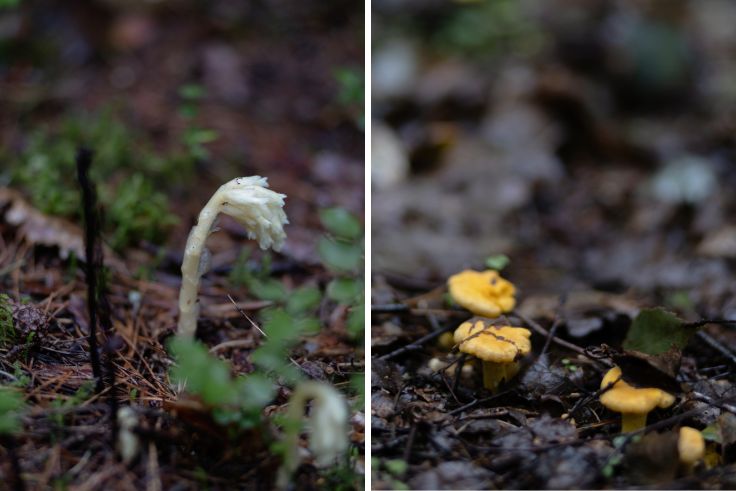
Asta Petrus, Chef-Owner of Desertų klubas – a hip bakery in the capital city of Vilnius – explains that Lithuanians retain a deep bond with the forest to this day. “In ancient times, forests were sacred places – our ancestors saw them as holy, and they passed that respect down to us," she says. “For many of us, mushroom picking isn’t just a seasonal activity – it’s a tradition, a memory and a connection to those who came before us. The love for mushrooms is in our blood. It’s deeply nostalgic – reminding us of childhood walks in the forest, of parents and grandparents (or even great-grandparents) teaching us how to find and recognise them.”
Equipped with this precious generational knowledge, Lithuanians venture deep into the forest every year during late summer and autumn – mushroom foraging season – to gather this edible fungi. Sometimes, they’ll sell mushrooms to passing travellers, saving the rest of their haul to be dried, cured, crushed, powdered or fried, ready for use in meat, fish and potato dishes. When the December frost creeps into the forest, however, foraging comes to an abrupt end.
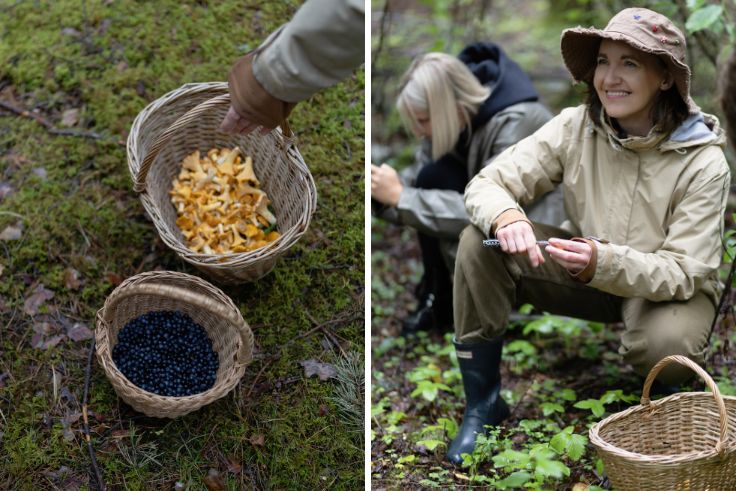
Nugrybauti: Getting Lost on a Mushroom Hunt
Lithuania’s deep-rooted connection to the natural world is unsurprising considering that one-third of the Baltic country is forested. Dense national parks are packed with Scots pines and Norway spruces, while the undergrowth is thick with bilberries, cranberries, lingonberries and an abundance of mushrooms. Around 380 varieties of wild mushroom are estimated to grow across Lithuania.Furthermore, Lithuania’s concept of ‘Right to Roam’ makes the wilderness accessible to all. Excluding state-protected areas, you can pick mushrooms and berries almost anywhere you like.
So, with all this choice, where should keen grybautojas (mushroom pickers) start?
Southern Lithuania is a real fungi hotspot, being home to mushroom-rich areas including the Dzūkija National Park. Just an hour’s drive from the capital of Vilnius, the protected landscape of Dzūkija comprises dense pine forests, marshlands and peatlands – a complex ecosystem that supports the growth of some 300 varieties of edible mushrooms. The area’s sandy soil makes agriculture here impossible, but it produces some of Europe’s finest mushrooms.
Yet it’s not enough to simply head for Dzūkija and look to the floor. Insider information on the best mushroom picking spots is vital – but not necessarily easy to acquire.
Indeed, Lithuanians often keep their favourite mushroom foraging spots a secret, never revealing them even to close friends. Ask a local for guidance in the forest, and you may well end up at the wrong place. Considering the sizeable generational knowledge and effort that has gone into uncovering these spots, this misdirection seems fair enough.
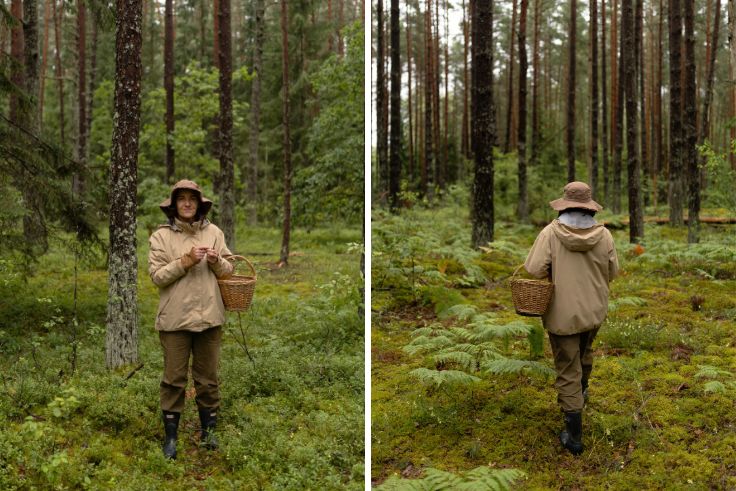
Asta explains: “Older people still guard their secret mushroom spots closely. They won’t even share them with their grandchildren unless they see that they truly care, take foraging seriously and respect the tradition.”
Indeed, Dzūkija’s grybautojas often track rainfall, humidity and the lunar cycle in order to uncover the highest quality mushrooms at the right time. Locals are taught from childhood where to find the fungi they seek. They know, for instance, that porcini can often be found near white moss and oak trees, while chanterelles are at home among junipers, and if you’re looking for red-capped scaler stalks, you should make for a birch grove.
Asta has even gone as far as creating her own ‘mushroom safari’ technique to boost the efficiency of her operation, as Desertų klubas’ menu demands around 10kg of chanterelles each week!
“We drive through the forest on a high, open four-wheeler, which gives me a perfect view of the forest floor. I can easily spot mushrooms, stop and pick them. With this new method, my foraging territory has grown and it’s made the whole experience even more fun and productive. But what matters most is respect for the forest – we never stray onto the forest floor, we stay on the driving path.”
Fungi Festivities in the ‘Mushroom Capital’
The small, green city of Varėna, in Dzūkija, hosts a festival dedicated to fungi every autumn. Tourists, locals and mycophiles flock to Lithuania’s ‘mushroom capital’ to participate in the annual mushroom-picking championship, which kicks off in the early morning mists of Varėna’s woods and ends with an awards ceremony in the park. There’s also the colourful mushroom pickers’ parade, stalls serving up Lithuanian cuisine and selling handicrafts, and plenty of opportunities to jig to live folk music.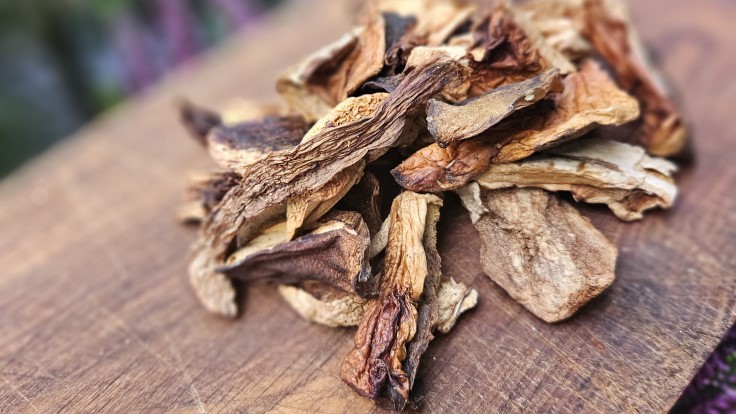
Feasting on the Spoils
With so many varieties of mushroom sprouting from Lithuania’s forest floors and starring on local menus, tourists looking to tuck in are spoilt for choice. Jūratė Sprindžiūnaitė, manager at Kristoforas – a stylish MICHELIN Bib Gourmand restaurant in Vilnius – offers some thoughts on where to start.“The most delicious and highly prized of all is the porcini,” he explains. “To us Lithuanians, it tastes better than any truffle. And we truly believe that the porcini carries even more umami – especially when dried.”
Ignas Damanskas, Head Chef at MICHELIN Green Star restaurant Red Brick, lists his favourite mushrooms as porcini, chanterelle, shiitake and lion’s mane, the latter of which is currently less known in Lithuania. “Grilled or cooked in butter, or even used in a dessert, they bring so much flavour and depth to a dish,” he says.
Meanwhile, Asta speaks highly of chanterelle mushrooms – which enjoyed a bumper crop in 2025 due to wet weather. This year, both of the bakery’s special seasonal dishes highlight chanterelles, and have rapidly become customer favourites.
For the first dish, Asta has created a warm bun stuffed with chanterelles, guanciale and creamy béchamel. Rich and comforting, this dish showcases traditional Lithuanian flavours.
The second seasonal option is an omelette with chanterelles, served with house-baked Lithuanian rye bread. The recipe is designed, Asta explains, to allow the delicate taste of the mushrooms to shine. “The result is a gentle, elegant dish – less familiar to Lithuanian palates, but no less satisfying.”
But porcini also has its place at the bakery. Its tea and baked goods pairing degustation currently sets a porcini mushroom doughnut alongside smoked black Lapsang Souchong tea – a bold, earthy combination.
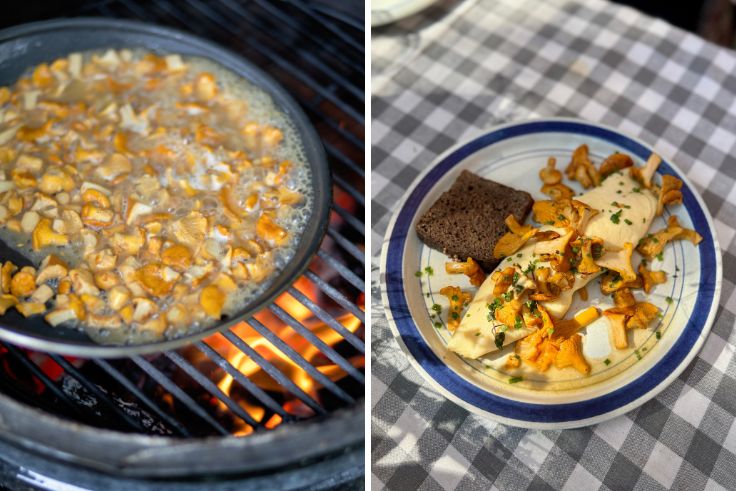
Unsurprisingly, many restaurants in Lithuania serve up traditional mushroom dishes, from tgrybų sriuba (mushroom soup) to silkė su grybais (mushrooms with herring) and cepelinai (thick potato dough parcels stuffed with porcini mushrooms). Others, like Red Brick and Kristoforas, put an unexpected twist on the revered ingredient. Here’s how.
Red Brick: Coffee, Mushroom and Beetroot
On a 1,730-acre working farm, an hour’s drive from Vilnius, Red Brick showcases produce grown and reared on its land, as well as foraged mushrooms.Head Chef Ignas reveals that the restaurant’s team has taken a course on identifying edible mushroom varieties, which comes in especially handy during the farm’s summer festival. However, foraging certainly isn’t a recent discovery for the chef. “My family’s relationship with mushrooms goes back to my childhood,” he says. “In the summer and autumn, we would go foraging in the local forest, searching for edible mushrooms and turning it into a competition to see who could find the most or the biggest ones.”
His tips for foraging? “Take your time, be curious, and enjoy the walk as much as the basket you bring home. That’s where the real magic starts,” he says. Once you’ve got them home, he recommends steaming them with aromatic herbs before grilling them. This prevents burning, keeps them juicy and infuses even more layers of flavour.
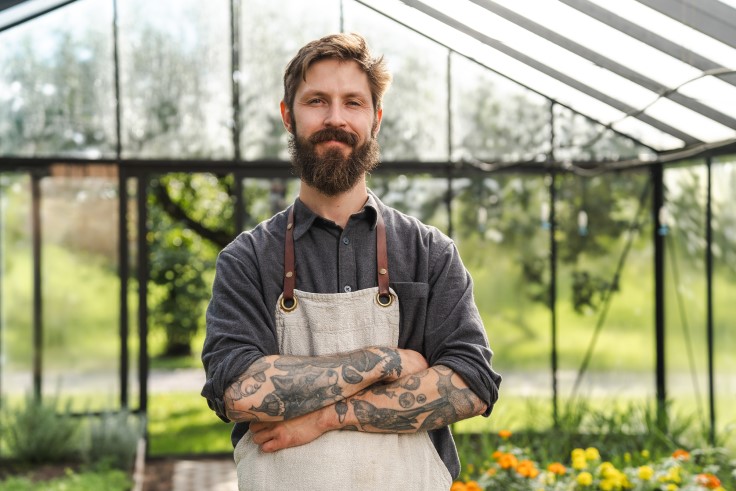
Unsurprisingly, Ignas enjoys experimenting with mushrooms in Red Brick’s kitchen, and his approach is highly seasonal, keeping the menu exciting for regulars. “Mushrooms always find their way into the menu, though not always in their original shape,” he says. “Sometimes they appear in sauces or creams, other times as powders or accents that add depth and richness to a dish.”
One of Red Brick’s stand-out dishes was its coffee, mushroom and beetroot dessert. Inspired by the earthy, deep notes reminiscent of long, dark winter days, the dessert featured a soft cream caramel infused with mushrooms, a coffee shoyu caramel to give a little more body and a tuile made from beetroot juice, which added a pleasant crunch.
However, Ignas reveals that he “probably” won’t repeat the dish this year. “Just like the changing seasons, each dish has its time on the menu,” he says. His plan for mushroom foraging season in 2025? Lion’s mane. “It’s not very well known in Lithuania, but it has so much potential – both in flavour and in its healthy qualities,” he explains.
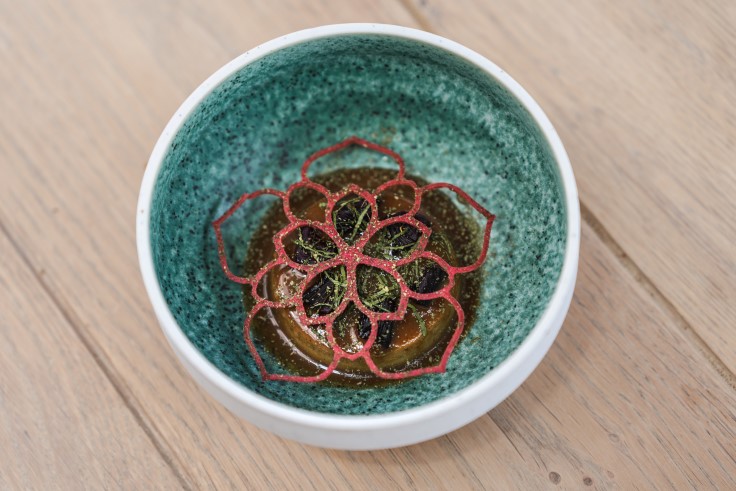
Kristoforas: Dark Chocolate with Dried Porcini
It’s hard to get much more cosmopolitan in Lithuania than at Bib Gourmand awarded Kristoforas, located within Vilnius Town Hall. The cooking is classical, with the kitchen plating up a mix of French and Italian cuisine, but the restaurant doesn’t miss the opportunity to creatively incorporate mushrooms – “an intrinsic part of the Lithuanian national identity” according to restaurant manager Jūratė.This is most evident in the restaurant’s wildly popular signature Kristoforas dessert – a delicate dark chocolate dish with dried porcini, where a crunchy base of thin cocoa feuilletine is topped with a dense and powerful dark chocolate mousse hiding a heart of dried porcini. Bitter chocolate powder, dried cep powder and fresh lemon thyme are sprinkled on top to finish. This complex, earthy dessert is paired with Henri Giraud Champenois Ratafia Solera – a fortified wine. “The two come together as naturally as carrots and peas in a salad,” Jūratė says.
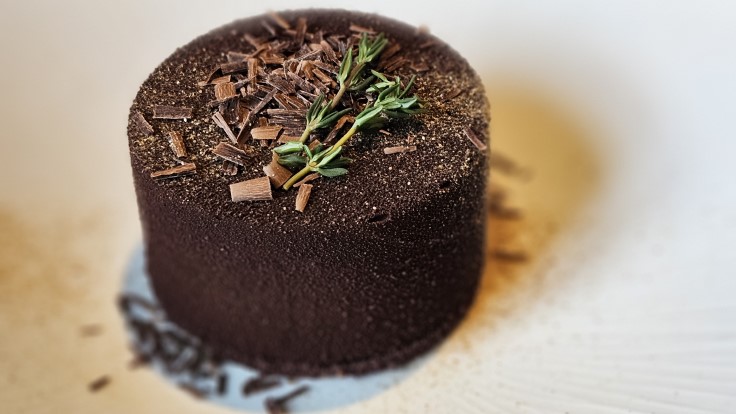
Mushrooms pop up elsewhere on Kristoforas’ menu, too. This year’s abundance of chanterelles resulted in a warm starter in which the mushrooms were served with new potatoes and traditional blood sausage. The dish was especially well-received by the restaurant’s French guests.
Kristoforas’s porcini mushrooms are, of course, foraged in the forests of Dzūkija. “We have very good friends there who know the best spots where porcini grow,” Jūratė says. However, this year’s porcini crop has been poor, resulting in a lack of mains that incorporate the fungi.
Mushroom pickers can encourage a good porcini harvest for the following year by picking only healthy mushrooms and harvesting them correctly, without damaging the mycelium (the underground fungal network), Jūratė explains.
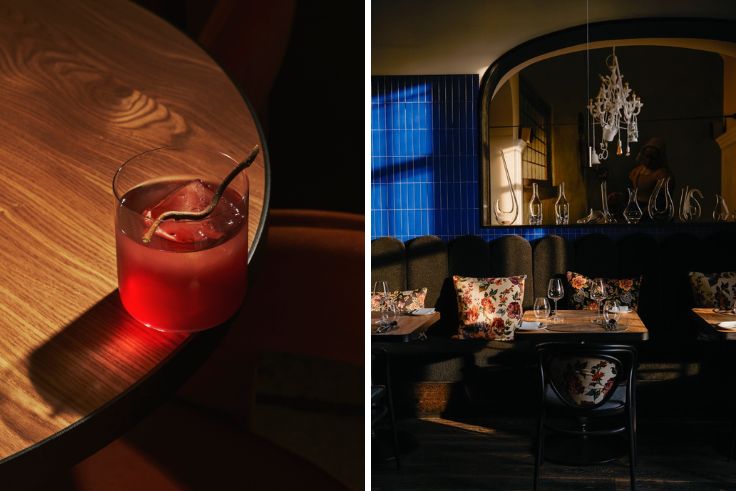
Joining In
During mushroom season, travellers who don’t have the inherited knowledge required for successful foraging missions can join eco-tourism excursions with a local guide. Not only is an expert companion vital when it comes to finding and identifying mushrooms that are safe to eat, but it’s also important to know how to be in the forest.The forest has many “unwritten rules” Asta reveals, from how to behave to how to communicate with fellow foragers. “It’s a quiet, respectful world, and being part of it feels like stepping into something timeless.”
Hero Image: A dessert of 'Coffee, Mushrooms and Beetroot' from Green Star restaurant Red Brick in Radiškis, Lithuania, which makes creative use of foraged mushrooms (© Red Brick)




